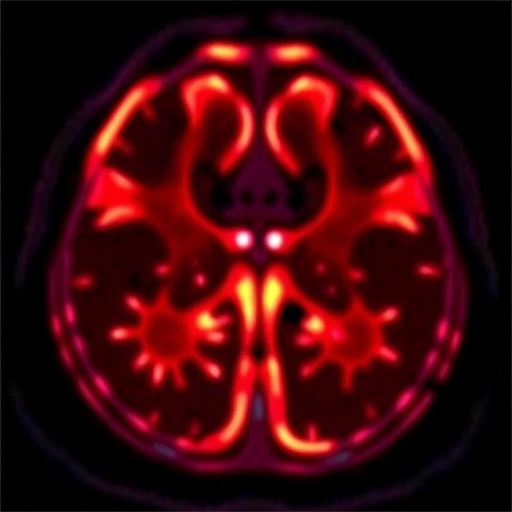In a major scientific breakthrough, researchers at the University of British Columbia’s Okanagan campus have delineated the molecular architecture behind the biosynthesis of mitraphylline, a rare and pharmaceutically promising natural compound. Published recently in the prestigious journal The Plant Cell, this study reveals the enzymatic machinery that tropical plants use to create spirooxindole alkaloids, a chemically intricate family of molecules known for their anti-tumor and anti-inflammatory properties. This advance opens doors for sustainable and scalable synthesis of these potent bioactive compounds through green chemistry approaches.
Spirooxindole alkaloids are characterized by their unique “twisted” ring structures, a stereochemical hallmark that underpins their biological activities. Despite long-standing curiosity, the precise enzymatic mechanisms enabling plants to fashion such complex three-dimensional molecular frameworks remained enigmatic, posing a barrier to both fundamental understanding and practical application. The research team, led by Dr. Thu-Thuy Dang, an expert in natural products biotechnology, has now identified a suite of enzymes responsible for orchestrating these spindle-shaped molecular arrangements.
At the heart of this molecular revelation is the successful characterization of a pair of enzymes pivotal in mitraphylline biosynthesis. One enzyme pre-organizes molecular building blocks into a defined three-dimensional orientation, while the other executes the critical “twisting” step that imparts the hallmark spiro configuration. This discovery effectively fills the missing pieces in the elusive biosynthetic “assembly line,” providing mechanistic insight into nature’s synthetic routes for such complex molecules.
The study’s progress capitalized on state-of-the-art genomic sequencing, with the establishment of a chromosome-level genome for Mitragyna parvifolia, a tropical tree closely related to other kratom species. This genomic roadmap was instrumental in pinpointing candidate enzymes within the plant’s intricate metabolic network. Subsequent biochemical assays validated their roles, shedding light on nature’s enzymatic toolkit for spirooxindole diversification.
Mitraphylline, found naturally only in trace amounts in plants like Mitragyna and Uncaria (commonly known as cat’s claw), has evaded synthetic accessibility due to the intricacy of its molecular configuration and low natural abundance. Traditional extraction methods are unsustainable, while chemical synthesis often struggles with the precise three-dimensional control required for biological activity. The enzyme-driven pathways elucidated by the UBC team now hold promise for bioengineering efforts aiming to produce mitraphylline and related compounds in microbial hosts or plant cell cultures.
Dr. Dang emphasized the broader implications of their findings, noting that the ability to decode and harness these natural enzymatic transformations paves the way for manufacturing complex therapeutic compounds through greener, bio-based methods. This approach could drastically reduce reliance on chemical synthesis routes that often involve toxic reagents and generate hazardous waste, aligning with global goals for sustainability in pharmaceutical production.
Further driving this innovation was the leadership of doctoral student Tuan-Anh Nguyen, whose work disentangled the biosynthetic sequence by functionally characterizing the enzymes and deciphering their three-dimensional catalytic mechanisms. Nguyen’s research benefited from the collaborative and interdisciplinary environment at UBC Okanagan, where faculty and students synergize expertise in biochemistry, molecular biology, and natural product chemistry.
The significance of this study extends beyond mitraphylline itself; it lays a foundational framework for understanding spirooxindole biosynthesis across plant species, unlocking potential for discovery and engineering of analog compounds with tailored pharmacological profiles. This enzymatic “toolkit” could catalyze novel drug development initiatives targeting cancers and inflammatory diseases, domains where effective therapeutic options remain urgently needed.
This ambitious project was a transnational collaboration with Dr. Satya Nadakuduti’s team at the University of Florida, blending complementary scientific strengths in plant genomics and enzymology. Their collaborative spirit amplified the discovery’s impact, underscoring the importance of integrative research networks in unraveling complex biochemical puzzles.
The research received robust funding support from multiple prestigious agencies including the Natural Sciences and Engineering Research Council of Canada (NSERC), the Canada Foundation for Innovation, Health Research BC, and the U.S. Department of Agriculture’s National Institute of Food and Agriculture. This investment reflects the recognized potential of translating fundamental plant biochemical insights into impactful biomedical applications.
Looking ahead, the team intends to expand their enzymatic repertoire to diversify the chemical landscape of therapeutic spirooxindoles. By adapting and optimizing these molecular catalysts, they aim to unlock new frontiers in synthetic biology, enabling sustainable manufacturing of rare natural products that currently pose considerable supply challenges.
In sum, this pioneering work marks a critical advance in natural product chemistry and enzymology. It not only unravels the molecular ballet enabling spirooxindole formation but also charts a bioinspired path to drug discovery and sustainable production. As the scientific community continues to explore nature’s molecular ingenuity, such insights will propel forward the next generation of pharmaceuticals and green biotechnologies.
Subject of Research: Cells
Article Title: A chromosome-level Mitragyna parvifolia genome unveils spirooxindole alkaloid diversification and mitraphylline biosynthesis
News Publication Date: 9-Sep-2025
Web References: http://dx.doi.org/10.1093/plcell/koaf207
Image Credits: UBC Okanagan
Keywords: mitraphylline, spirooxindole alkaloids, natural products biotechnology, enzyme catalysis, plant genomics, sustainable drug synthesis, green chemistry, molecular biosynthesis, anti-tumor compounds, natural product enzymes
Tags: anti-inflammatory compoundsanti-tumor propertiesDr. Thu-Thuy Dang researchenzymes in plant chemistrygreen chemistry approachesmitraphylline biosynthesismolecular architecture of natural compoundsnatural products biotechnologyplant-based medicinespirooxindole alkaloidssustainable synthesis of bioactive compoundsUniversity of British Columbia research





